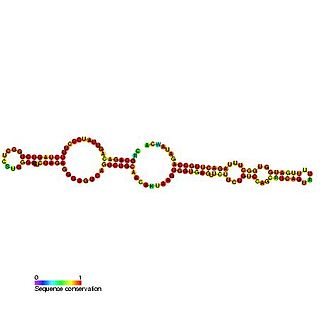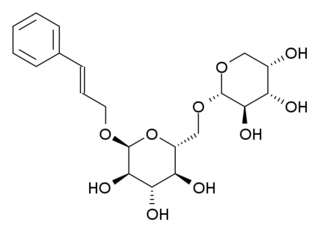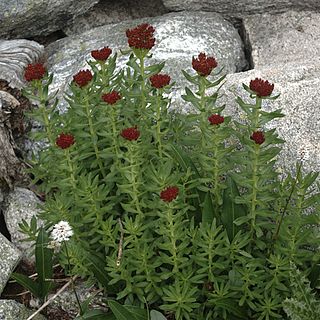
The Crassulaceae, also known as the stonecrop family or the orpine family, are a diverse family of dicotyledon flowering plants characterized by succulent leaves and a unique form of photosynthesis, known as Crassulacean acid metabolism (CAM). Flowers generally have five floral parts. Crassulaceae are usually herbaceous but there are some subshrubs, and relatively few treelike or aquatic plants. Crassulaceae are a medium size monophyletic family in the core eudicots, among the order Saxifragales, whose diversity has made infrafamilial classification very difficult. The family includes approximately 1,400 species and 34–35 genera, depending on the circumscription of the genus Sedum, and distributed over three subfamilies. Members of the Crassulaceae are found worldwide, but mostly in the Northern Hemisphere and southern Africa, typically in dry and/or cold areas where water may be scarce, although a few are aquatic.

Sedum is a large genus of flowering plants in the family Crassulaceae, members of which are commonly known as stonecrops. The genus has been described as containing up to 600 species, subsequently reduced to 400–500. They are leaf succulents found primarily in the Northern Hemisphere, but extending into the southern hemisphere in Africa and South America. The plants vary from annual and creeping herbs to shrubs. The plants have water-storing leaves. The flowers usually have five petals, seldom four or six. There are typically twice as many stamens as petals. Various species formerly classified as Sedum are now in the segregate genera Hylotelephium and Rhodiola.

Rhodiola rosea is a perennial flowering plant in the family Crassulaceae. It grows naturally in wild Arctic regions of Europe, Asia, and North America, and can be propagated as a groundcover. Rhodiola rosea has been used in traditional medicine for several disorders, notably including treatment of anxiety and depression. As of 2019, there is no high-quality clinical research to indicate it is effective for treating any disorder, and the United States Food and Drug Administration has issued several warnings to manufacturers of R. rosea dietary supplements for making false health claims about its safety and efficacy.
Antonina Georgievna Borissova (1903–1970) was a Russian botanist, specialising in the flora of the deserts and semi-desert of central Asia. Borissova authored 195 land plant species names, the ninth-highest number of such names authored by any female scientist.

Hydraenidae is a family of very small aquatic beetles, sometimes called "minute moss beetles", with a worldwide distribution. These beetles are generally 1–3 mm in length with clubbed antennae. They do not swim well and are generally found crawling in marginal vegetation. Most are phytophagous but a few saprophagous and predatory species are known.
British NVC community MC3 is one of the maritime cliff communities in the British National Vegetation Classification system. It is one of five communities categorised as maritime cliff crevice and ledge communities.

Lotaustralin is a cyanogenic glucoside found in small amounts in Fabaceae austral trefoil, cassava, lima bean, roseroot and white clover, among other plants. Lotaustralin is the glucoside of methyl ethyl ketone cyanohydrin and is structurally related to linamarin, the acetone cyanohydrin glucoside also found in these plants. Both lotaustralin and linamarin may be hydrolyzed by the enzyme linamarase to form glucose and a precursor to the toxic compound hydrogen cyanide.

Rhodiola is a genus of perennial plants in the family Crassulaceae that resemble Sedum and other members of the family. Like sedums, Rhodiola species are often called stonecrops. Some authors merge Rhodiola into Sedum.

Small nucleolar RNA SNORA56 is a non-coding RNA (ncRNA) molecule which functions in the biogenesis (modification) of other small nuclear RNAs (snRNAs). This type of modifying RNA is located in the nucleolus of the eukaryotic cell which is a major site of snRNA biogenesis. It is known as a small nucleolar RNA (snoRNA) and also often referred to as a 'guide RNA'. ACA56 was originally cloned from HeLa cells and belongs to the H/ACA box class of snoRNAs as it has the predicted hairpin-hinge-hairpin-tail structure, has the conserved H/ACA-box motifs and is found associated with GAR1 protein. snoRNA ACA56 is predicted to guide the pseudouridylation of U1664 of 28S ribosomal RNA (rRNA). Pseudouridylation is the to the different isomeric form pseudouridine.

The natural history of Minnesota covers many plant and animal species in the U.S. state of Minnesota. The continental climate and location of Minnesota at the physiographic intersection of the Laurentian and the Interior Plains influences its plant and animal life. Three of North America's biomes converge in Minnesota: prairie grasslands in the southwestern and western parts of the state, the eastern temperate deciduous forests in the east-central and the southeast and the coniferous forest in the north-central and northeast.
Misery Mountain, 2,671 feet (814 m), with at least ten well-defined summits, is a prominent 6 mi (9.7 km) long ridgeline in the Taconic Mountains of western Massachusetts and adjacent New York. The west side of the mountain is located in New York; the east side and high point lie within Massachusetts. The summit ridge is part meadow and part wooded with red spruce, balsam fir, and northern hardwood tree species. It is notable for its views of the Hudson River Valley to the west. The 35 mi (56 km) Taconic Crest Trail traverses the crest of the ridgeline, but does not cross the summit.

Rosavin is a cinnamyl alcohol glycoside found in the plant Rhodiola rosea. It is thought to be one of the compounds responsible for the antidepressant and anxiolytic actions of this plant, along with salidroside.

Salidroside (rhodioloside) is a glucoside of tyrosol found in the plant Rhodiola rosea. It has been studied, along with rosavin, as one of the potential compounds responsible for the putative antidepressant and anxiolytic actions of this plant. Salidroside may be more active than rosavin, even though many commercially marketed Rhodiola rosea extracts are standardized for rosavin content rather than salidroside.

Herbacetin is a flavonol, a type of flavonoid.

Rhodiola integrifolia is a species of flowering plant in the stonecrop family known by the common names ledge stonecrop, western roseroot, and king's crown. It is native to north-easternmost Russia, including Kamchatka, and western North America, where it grows in mountainous habitat in subalpine and alpine climates, including meadows, cliffs, and talus. It is a perennial herb producing a stout stem from a fleshy, branching caudex, reaching a maximum height near 30 centimeters. The fleshy leaves are alternately arranged on the stem, widely lance-shaped to oval and pointed, flat but upcurved toward the tip, reaching 2.5 centimeters long. They are green when new and age to orange, rose, or red. The inflorescence is a dense cyme of up to 50 flowers with fleshy petals in shades of bright red to deep purple. The fruits are red, rounded ovals with pointed tips.

Rosiridin is a chemical compound that has been isolated from Rhodiola sachalinensis. Rosiridin can inhibit monoamine oxidases A and B, possibly meaning that the compound could help in the treatment of depression and senile dementia.

Rosin is a glycoside ester of Cinnamyl alcohol and a constituent of Rhodiola rosea.

Rhodiola rhodantha, common name redpod stonecrop or queen's crown, is a perennial flowering plant in the family Crassulaceae.















